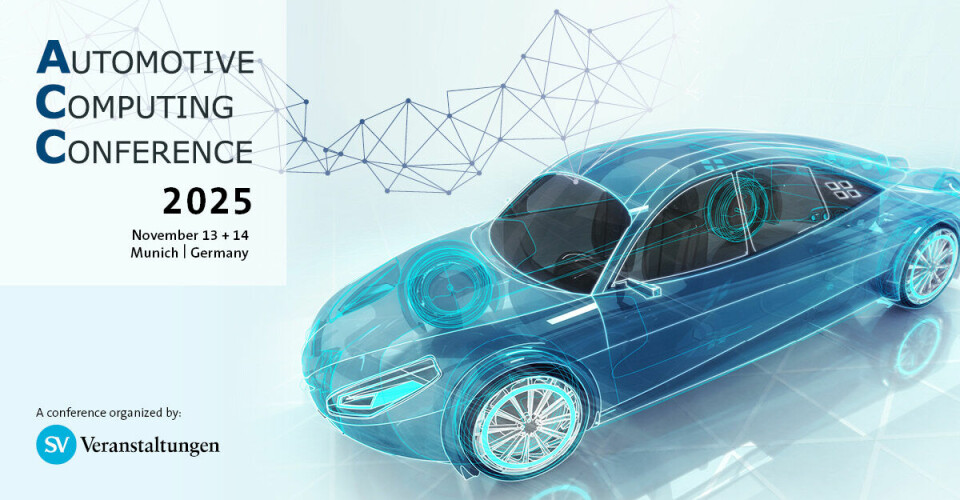Software Defined Vehicles
automotiveIT car.summit 2025
IT and engineering must speak the same language

Development and IT must collaborate more closely than ever on software-defined vehicles. External partners and their expertise are equally important aspects, experts emphasise at the automotiveIT car.summit.
Without teamwork, everything is nothing - at least that's how the renowned experts from the IT and development departments of automotive companies see it on the occasion of the 2025 edition of the industry meeting car.summit in Munich. Marcus Welz, CEO of Hyundai Connected Mobility, emphasises that change requires not only a good balance between technology, processes, methods, and tools, but also a new orientation towards changed business models and value creation structures. In his keynote, he presents a vision that ideally influences the entire value chain and customer experiences. “In the automotive industry, it is crucial to bring the digital and real world together,” states the CEO.
Fundamental: change of the vehicle and new customer desires

According to Welz, two fundamental trends are shaping the automotive industry: the change of the vehicle and the change in customer preferences. Technologically, the change is moving from classic systems and components to API-based technology modules. However, a major change concerns the employee structure: “fewer managers, more real software experts!” is the motto. According to the Hyundai expert, today more than ever, we simply need those people who write code, design architectures, and take responsibility in these fields. This then particularly improves reliability and speed.
With this maxim, Hyundai is opening up more than before - for a long time, it has been known as an OEM with deep in-house expertise, for example, in the form of its own tier-1 company Hyundai Mobis. Looking ahead, it shows that only with even broader team thinking can all upcoming challenges be overcome. According to Welz, the term 'software-defined vehicle' is actually too narrow. According to him, today's and future worlds go beyond the vehicle as a monolith, towards a 'vehicle-to-everything'. In autonomous driving, Hyundai is therefore pursuing a broad approach and operates one of the important robotaxi services in the USA with Motional, based on Ioniq 5 hardware. Of course, with all ideals, the business model must also be right. With regard to monetisation, according to the Hyundai expert, the connected car is seen as a platform that brings intelligent functions into the vehicle. The Bluelink system contributes to this, for example, a smartphone app that is thematically packaged. Already today, there are 1.7 million users in the EU alone, around 14 million globally. The challenges can only be met with appropriate ideas, but also with technological depth and a breadth of offerings.
Essential: Networking of R&D and IT
Among the companies from the supplier world that fuel the automotive SDV world with appropriate technology and industrialisation expertise is Aumovio. The young spin-off from Continental's automotive division has on board Aurora Sere-Schneider, a recognised expert who, as Vice President IT Engineering Applications, orchestrates the interplay between development and IT. Just over two years ago, Sere-Schneider moved from R&D to IT and took on her new role with the aim of better networking IT with R&D. For this, IT simply needs to learn what developers need, states the Aumovio expert. In her presentation in Munich, she describes to the audience the path that Aumovio has taken in several stages and continues to take. IT initially started proactively and asked what developers expect. Above all, you have to talk to each other, says Sere-Schneider. It is important to recognise that IT must also be part of the digital factory. It is also important to consider what type of products you are talking about and that scalability and consistency of interfaces are taken into account. Furthermore, the participation of R&D must be strengthened. At Aumovio, this includes a service ticket system. This has at least shown progress within the company and built trust between departments.
Sustainable: Agile collaboration and integrated value chain
How a widely impactful product can achieve positive interaction is demonstrated by Mercedes-Benz with its modular and scalable operating system MB.OS, which, with the launch of the brand-new CLA model, also ushers in a new era for the car manufacturer. Matthias Schneider, Vice President IT RD & Procurement, and Martin Haselbach, Director MB.OS Cloud, Data and SW Update & Diagnostics, take the audience on a short journey, at the end of which, alongside technical progress, better teamwork also results. At the heart of the 'chip-to-cloud' architecture for the OEM are seamless over-the-air updates that keep the vehicle up to date - anytime and anywhere. According to the experts, however, the foundation of this milestone is a software journey: through agile collaboration and optimal integration along the entire value chain, bold innovations have been made possible - from the first line of code to the update in the finished vehicle. Development and IT have worked hand in hand to create a seamless, intuitive customer experience - digital, dynamic, and forward-looking, emphasise the Mercedes experts.

Schneider and Haselbach had previously conducted a kind of switch of their roles to get closer to the ultimate goal of MB.OS, in order to ultimately be able to fulfil a promise to customers with the CLA in the form of precise OTA updates, which is: "Always fresh". In the process, they moved away from individual software types to a comprehensive solution and ultimately achieved the goal of being ten times faster. They brought all the involved departments into a unified rhythm, up to the works council. The organisational separation of departments still exists, of course. However, today they are much more comprehensive in the flow, and the cultural level with regard to IT management has significantly improved, according to Schneider.
This article was first published at automotiveit.eu

